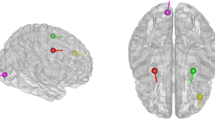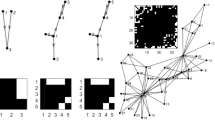Abstract
In causal discovery, non-Gaussianity has been used to characterize the complete configuration of a linear non-Gaussian acyclic model (LiNGAM), encompassing both the causal ordering of variables and their respective connection strengths. However, LiNGAM can only deal with the finite-dimensional case. To expand this concept, we extend the notion of variables to encompass vectors and even functions, leading to the functional linear non-Gaussian acyclic model (Func-LiNGAM). Our motivation stems from the desire to identify causal relationships in brain-effective connectivity tasks involving, for example, fMRI and EEG datasets. We demonstrate why the original LiNGAM fails to handle these inherently infinite-dimensional datasets and explain the availability of functional data analysis from both empirical and theoretical perspectives. We establish theoretical guarantees of the identifiability of the causal relationship among non-Gaussian random vectors and even random functions in infinite-dimensional Hilbert spaces. To address the issue of sparsity in discrete time points within intrinsic infinite-dimensional functional data, we propose optimizing the coordinates of the vectors using functional principal component analysis. Experimental results on synthetic data verify the ability of the proposed framework to identify causal relationships among multivariate functions using the observed samples. For real data, we focus on analyzing the brain connectivity patterns derived from fMRI data.






Similar content being viewed by others
Data availability
Not applicable.
Notes
\(X_1\perp \!\!\!\perp X_2\) denotes the independence of X and Y.
Suppose Z and W be binary taking \(\pm 1\) equiprobably and zero-mean Gaussian. Then, ZW and Z are not jointly Gaussian. Even though \({{\mathbb {E}}}[ZW\cdot Z]={{\mathbb {E}}}[W]\cdot {{\mathbb {E}}}[Z^2]=0\) but they are not independent.
See the definition of the Bochner integral in Hsing and Eubank (2015).
We define a bounded linear operator \(T: {\mathscr {H}}_1\rightarrow {\mathscr {H}}_2\) to be compact if, for any bounded infinite sequence \(\{f_n\}\) in \({\mathscr {H}}_1\), the sequence \(\{Tf_n\}\) has a convergent subsequence in \({\mathscr {H}}_2\).
References
Darmois G (1953) Analyse generale des liaisons stochastiques. Rev Inst Int Stat 21:2–8
Ebert-Uphoff I, Deng Y (2012) Causal discovery for climate research using graphical models. J Clim 25(17):5648–5665
Friston KJ (2001) Functional and effective connectivity: a review. Brain Connect 1(1):13–36
Ghurye S, Olkin I (1962) A characterization of the multivariate normal distribution. Ann Math Stat 33(2):533–541
Gong C, Yao D, Zhang C, Li W, Bi J, Du L, Wang J (2023) Causal discovery from temporal data. In: Proceedings of the 29th ACM SIGKDD conference on knowledge discovery and data mining, association for computing machinery, New York, KDD ’23, pp 5803–5804. https://doi.org/10.1145/3580305.3599552
Hsing T, Eubank R (2015) Theoretical foundations of functional data analysis, with an introduction to linear operators. Wiley, Chichester
Lee KY, Li L (2022) Functional structural equation model. J R Stat Soc Ser B 84(2):600–29
Li B (2018) Linear operator-based statistical analysis: a useful paradigm for big data. Can J Stat 46(1):79–103. https://doi.org/10.1002/cjs.11329
Lucas PJ, Gaag LC, Abu-Hanna A (2004) Bayesian networks in biomedicine and health-care. Artif Intell Med 30:201–214. https://doi.org/10.1016/j.artmed.2003.11.001
Luo S, Song R, Styner M, Gilmore J, Zhu H (2019) FSEM: functional structural equation models for twin functional data. J Am Stat Assoc 114(525):344–357
majapavlo (2022) The book of statistical proofs. https://statproofbook.github.io/P/chi2-gam.html
Myronyuk MV (2008) On the Skitovich–Darmois theorem and Heyde theorem in a Banach space. Ukr Math J 60:1437–1447
Pearl J (2000) Causality: models, reasoning, and inference. Cambridge University Press, Cambridge
Qiao X, Guo S, James GM (2019) Functional graphical models. J Am Stat Assoc 114(525):211–222
Ramsay JO, Silverman BW (2005) Functional data analysis. Springer, http://www.worldcat.org/isbn/9780387400808
Richardson H, Lisandrelli G, Riobueno-Naylor A, Saxe R (2018) Development of the social brain from age three to twelve years. Nat Commun 9(1):1027
Roy S, Wong RKW, Ni Y (2023) Directed cyclic graph for causal discovery from multivariate functional data. arXiv:2310.20537
Sachs K, Perez O, Pe’er D, Lauffenburger DA, Nolan GP (2005) Causal protein-signaling networks derived from multiparameter single-cell data. Science 308(5721):523–529. https://doi.org/10.1126/science.1105809
Shapiro SS, Wilk MB (1965) An analysis of variance test for normality (complete samples). Biometrika 52(3/4):591–611. http://www.jstor.org/stable/2333709
Shimizu S, Hoyer PO, Hyvärinen A, Kerminen A (2006) A linear non-Gaussian acyclic model for causal discovery. J Mach Learn Res 7(72):2003–2030
Shimizu S, Inazumi T, Sogawa Y, Hyvärinen A, Kawahara Y, Washio T, Hoyer PO, Bollen K (2011) DirectLiNGAM: a direct method for learning a linear non-Gaussian structural equation model. J Mach Learn Res 12(33):1225–1248
Skitivic VP (1953) On a property of the normal distribution. Dokl Akad Nauk SSSR (NS) 89:217–219
Spirtes P, Glymour C, Scheines R (2000) Causation, prediction, and search. The MIT Press, Cambridge
Tsamardinos I, Brown L, Aliferis C (2006) The max-min hill-climbing Bayesian network structure learning algorithm. Mach Learn 65:31–78
Tsay R, Pourahmadi M (2017) Modelling structured correlation matrices. Biometrika 104(1):237–242
van Neerven J (2020) Stochastic evolution equations. https://ocw.tudelft.nl/courses/stochastic-evolution-equations/subjects/lecture-4-gaussian-random-variables/
Walck C (1996) Hand-book on statistical distributions for experimentalists. https://api.semanticscholar.org/CorpusID:122813337
Wei Z, Li H (2008) A hidden spatial-temporal Markov random field model for network-based analysis of time course gene expression data. Ann Appl Stat 2(1):408–429
Xia M, Wang J, He Y (2013) BrainNet viewer: a network visualization tool for human brain connectomics. PLoS One 8(7):e68910
Yang T, Suzuki J (2022) The functional lingam. In: Salmerön A, Rumï R (eds) The 11th international conference on probabilistic graphical models, PMLR, vol 186, pp 25–36
Zhou F, He K, Wang K, Xu Y, Ni Y (2022) Functional Bayesian networks for discovering causality from multivariate functional data. arXiv:2210.12832
Funding
TLY was supported by JST, the establishment of university fellowships toward the creation of science technology innovation, under Grant No. JPMJFS2125. KYL was partially supported by the NSF under Grant No. CIF-2102243. JS was supported by the Grants-in-Aid for Scientific Research (C) under Grant No. 22K11931.
Author information
Authors and Affiliations
Contributions
TLY: methodology, theory, coding, and writing; KYL: theory validation; KZ: formal analysis and supervision; JS: methodology, theory validation, and supervision. All authors discussed the theoretical and experimental results and contributed to the final manuscript.
Corresponding author
Ethics declarations
Conflict of interest
The authors declare no conflict of interest.
Ethics approval
Not applicable.
Consent to participate
Not applicable.
Consent for publication
Not applicable.
Additional information
Communicated by SHIMIZU Shohei.
Publisher's Note
Springer Nature remains neutral with regard to jurisdictional claims in published maps and institutional affiliations.
About this article
Cite this article
Yang, TL., Lee, KY., Zhang, K. et al. Functional linear non-Gaussian acyclic model for causal discovery. Behaviormetrika (2024). https://doi.org/10.1007/s41237-024-00226-5
Received:
Accepted:
Published:
DOI: https://doi.org/10.1007/s41237-024-00226-5




